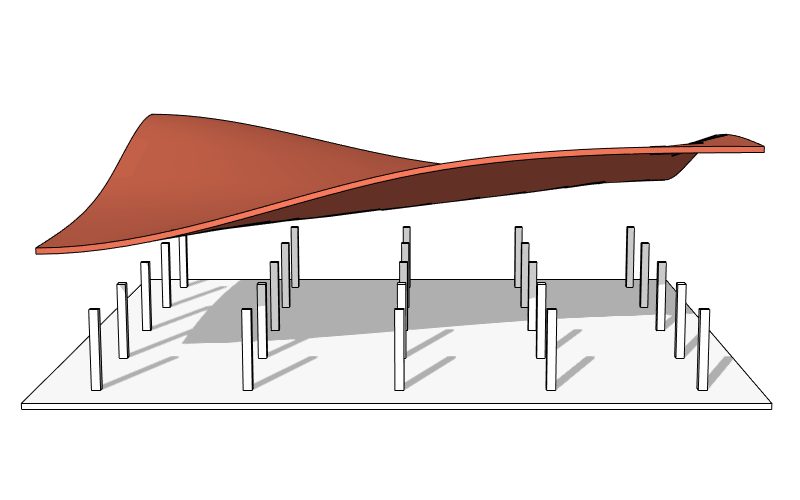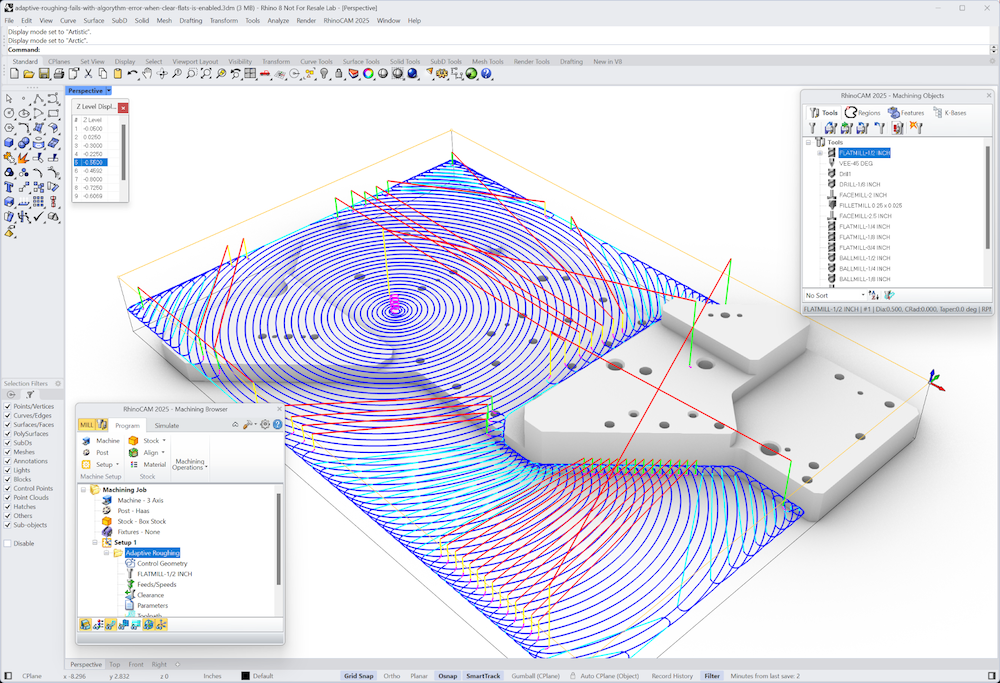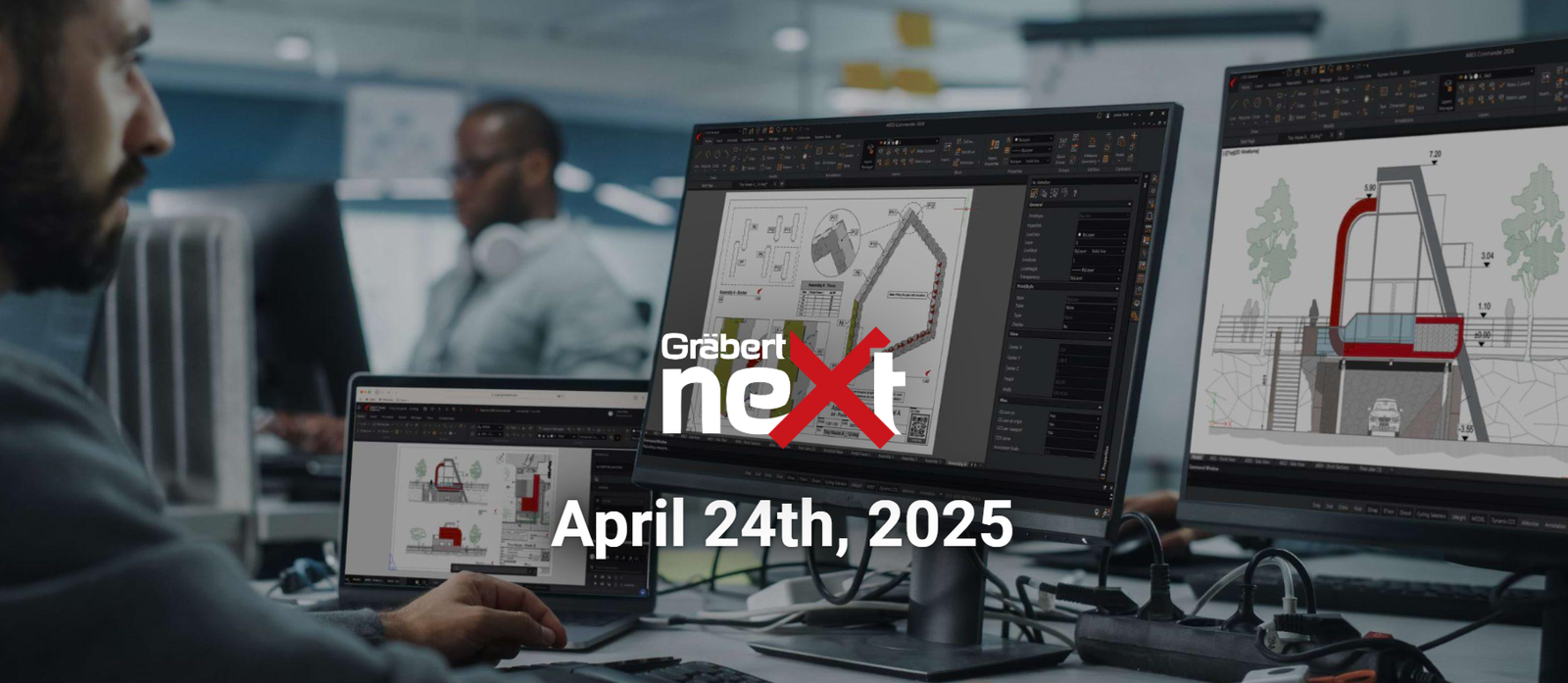Your Cart is Empty
Customer Testimonials
-
"Great customer service. The folks at Novedge were super helpful in navigating a somewhat complicated order including software upgrades and serial numbers in various stages of inactivity. They were friendly and helpful throughout the process.."
Ruben Ruckmark
"Quick & very helpful. We have been using Novedge for years and are very happy with their quick service when we need to make a purchase and excellent support resolving any issues."
Will Woodson
"Scott is the best. He reminds me about subscriptions dates, guides me in the correct direction for updates. He always responds promptly to me. He is literally the reason I continue to work with Novedge and will do so in the future."
Edward Mchugh
"Calvin Lok is “the man”. After my purchase of Sketchup 2021, he called me and provided step-by-step instructions to ease me through difficulties I was having with the setup of my new software."
Mike Borzage
The Edge: Matthew Gaul – Sitting on the dock of the BAYA
November 25, 2014 8 min read
 Novedge: Tell us a bit about who you are and what you do.
Novedge: Tell us a bit about who you are and what you do.
Matthew Gaul: My name is Matthew Gaul and I’m originally from Iowa, where I attended Iowa State University and discovered my passion for changing the way Architecture is understood, taught, and practiced. At school I was a part of DATUM, the student-run journal of Architecture, where we discussed architecture with an ‘a’ and an ‘A’, as well as wrote and reviewed articles and projects for publication. One of the primary goals of DATUM is to keep a conversation going outside of studio that bridges all classes, subjects, and grade levels to provoke thought on any subject of interest to a[A]rchitects. With this interest I sat on critiques with professors and practitioners for several studio classes before I graduated.
Since moving to the Bay Area I have been engaged with the vibrant architectural community here; the AIA, BAYA, The Missing 32% Project, and the ACE Mentorship Program. I don’t think I could have been happier anywhere else, nor have found such great opportunity to do what I do.
I am also an 'amature' (not a typo) triathalete, carpenter, and tailor.
Novedge: What is or has been the biggest influence on your work?
Matthew Gaul: Being taught to understand and practice architecture in my own way, has been the biggest influence on my work, and everything that I do really.
Like many students, I had a semester when I wanted to quit architecture entirely. My problem was that everything I was doing and all the feedback I was receiving was arbitrary to me. The following semester I had a studio instructor who taught me to practice architecture following my own instinct. This meant figuring out how I understood the built environment and developing my own design process from the ground up. All of my studio-mates did the same thing and, despite pursuing unique design processes, all of our work reached the same high level of quality and responded just as accurately to the same client and program.
As a continuation of that work, I did an independent study in my fifth year based on how I understood architecture, which was through language. To me, architecture is a rhetorical practice. So I guess it’s only natural that for the past year I have served as the Communications Chair for BAYA (Bay Area Young Architects).
Novedge: Speaking of BAYA, what have you learned from your involvement with the local community?
Matthew Gaul: It takes a lot of good people to make good things happen, and we are fortunate to have such people here is San Francisco. It seems like every month I'm finding out about another great group or resource with a cause to improve the profession and how we practice. This makes a lot of sense to me, since an architect’s primary occupation is shaping and improving the built environment — the world we live in.
In the last year alone, I have been a part of BAYA, the ACE Mentorship Program, the AIA SF’s Mentorship Program, The Missing 32%, the ARE Pact, the AIA SF’s IDP Curriculum Development committee, and now the AIA SF’s Board. It was probably foolhardy for me to get into all of these things, seek a new job, and get married in one year. But, I see the value in and love all of it.
Novedge: What is a recent project you worked on with BAYA?
Matthew Gaul: This summer, for the first time, BAYA was allowed to seek sponsorship. This meant that we could start to raise the funds necessary to fulfill our potential and ambition as a professional organization. Just as luck would have it, we had a big annual party with the young professionals components of SEAONC and ASCE coming up (our Oktoberfest). We saw this as a great opportunity to elevate our groups’ social to a new level and network with some new faces in the industry. 
Cheers……or Prosit?
Of course, to seek sponsorship we needed a really good set of marketing materials that defined who BAYA is and what BAYA does. In going over all that we do, who our members are, what value we bring to the industry, writing our first ever official mission statement, and producing our brochure, we learned a lot. We also got a lot more excited and focused about what BAYA could become.
Check out BAYA's complete Marketing Brochure here.
As luck would have it again, BAYA’s membership has seen significant growth in the past year and with that growth there’s a lot of opportunity to do more and fulfill our mission. We have many great ideas for programs and events that we could and should have, as a leading emerging professionals organization, but we need a lot infrastructure to support that internally as well.
So, in addition to raising funds, we restructured and are actively recruiting more talent. Going forward our five officers will not be doing all of the developing, planning, and organizing as a single group as we have done in the past. This small structure helped us balance our BAYA commitments and our day jobs’ deadlines, but it was limiting. With our new structure, we will act more like a board, independently fulfilling our responsibilities and developing our programs with the help of a committee for each officer. Now, from our larger membership, a greater number of talented and volitional emerging professionals are going to become involved in making things happen in the profession and developing into future leaders.
Thinking about it now, it has been a doozy of a year. This alone happened in about three to four months. I feel a lot of credit goes to our current leader, Wesley Wong, who put forth the vision and backed it up with more leg work than anyone. Chris Crowe, Michael Park, and I did a lot, but we could not have done it without him. Credit also goes to the real marketers and past BAYA leaders, who advised us along the way.
Novedge: Given that BAYA’s mission is to create a community for emerging professionals in architecture and further their professional development, what do you see BAYA doing in the next 3-5 years?
Matthew Gaul: Oh man, there is a lot that I see BAYA doing and there is a lot for us to do, to get there! First of all we are going to be partnering with the other outstanding committees of AIA SF and seeking partnerships with other professional organizations locally. Everything I see BAYA doing will have an impact on the architectural community, so we’re going to be doing it together.
I would like to see BAYA offer development opportunities from resume+portfolio reviews and interview practice, to full on job fairs. There are a lot of soft skills, like how to thrive in an office environment, that you just don’t learn in school and BAYA should address them.
We will continue our successful and popular monthly firm tours to keep in touch with the local practice of architecture and give our members a chance to learn from others outside their offices. We will also visit firms that practice other kinds of design, like landscape, graphic, and digital.
BAYA will have regular interest and educational events where our members can learn about and discuss topics from design theory and government policy to the business side of starting your own firm.
We will also be doing more of our events with the local academic programs to bridge the gaps between school and professional practice.
Internally, I would like to see a full fledged website to communicate who we are and all that we do, serve as a community communication board, and deliver resources to our members. BAYA should have a well maintained sponsorship program. And finally, I would like to see everything we do be so successful that BAYA is nationally recognized and imitated by other emerging professional organizations.
Novedge: You recently started a new job at BAR Architects. What drew you to BAR?
Matthew Gaul: I was looking for a firm where I could practice more skills on a greater variety of project types and an environment that offered greater resources to learn from and opportunities to develop. I am only at the outset of my career and there is so much I want to do and experience. Hands down BAR does really great work in a variety of project types, but they also nail creating an environment and culture that brings forth all of the resources and opportunities that a 70-90 person firm can.
Novedge: What software do you use?
Matthew Gaul:Well….. I’m not much of a software hound but I’ve used Revit, AutoCAD, SketchUp, and the Adobesuite (Photoshop, Illustrator, InDesign). I am a big fan of how integrated and self completing Revit is. If you have a model, you already have all your basic drawings and you can work at it from three or two dimensions. That being said, I usually like to start with looser hand sketching and drawing before things ‘get real’ in the computer. At that point I’m looking for the programs that others know, so that we can effectively communicate to each other and work together. To make the finishing touches on presentation work I usually turn to Adobe’s programs.
One other kind of ‘software' I’m really interested in, is ‘human software’ and language. While computer software can be used to understanding many things about our projects and create our designs, there’s a lot of understanding and creating that happens beyond those tools, just between people. Whether it’s a client, a government official, a contractor, a coworker or society at large, I’m fascinated by how the interactions between them, and the project, shape the project and contribute to its success, or lack there of.
Novedge: What are your favorite blogs about Architecture that are still relatively unknown?
Matthew Gaul: I’m afraid I’m not terribly original with the media I consume. I enjoy reading Life of an Architect and listening to 99% Invisible(which I did for 9 hours straight the first day I discovered it: it was a Saturday and I had a lot of things to do around the apartment).
Novedge: Architecture as a profession is changing a lot: what would you like to see happen in the next few years?
Matthew Gaul: I would like to see architecture raise, communicate, and establish its value. Architects specialize in playing one of the most important roles in shaping the built environment, which is pretty important.
In many cases our role is diminished, limited, or undervalued, for any number of reasons.
There is a lot that we can do to improve the quality of everyday life and the future of our species, but we are not currently in a position to do all that we can and should. We need society to recognize the greater value that Architecture can produce. I think that if we did that, we could make the case for more reasonable deadlines, to lend more of our expertise to our projects, and we could be paid more for it.
Novedge: And here's one last, fun question: what architectural site would you like to visit and haven't yet?
Gaudi’s completed Sagrada Família. I took my girlfriend there on a trip after my semester abroad and we loved it. We’re married now and we’re planning on going back for our 25th wedding anniversary… which is when it should be finished. (Fingers crossed.)
Check out this video preview of what The Sagrada Familia will look like in 2026.
If you are a young Bay Area Architect, or you are a young Architect period, inspired by BAYA's work, connect with them on Facebook. If you are a prospective sponsor or an experienced professional who wants to lend a hand to the Architects of tomorrow, bridge the gap and join this bustling network. We are sure they will go places, including Barcelona.
And don't forget to connect with Novedge too, both on Twitterand Facebook!
Related articles
Also in NOVEDGE Blog

Enhance Your Designs with VisualARQ 3: Effortless Geometry Extensions for Walls and Columns
April 30, 2025 8 min read
Read More
MecSoft Unveils RhinoCAM 2025 and VisualCAD/CAM 2025 with Enhanced Features
March 08, 2025 5 min read
Read MoreSubscribe
Sign up to get the latest on sales, new releases and more …






